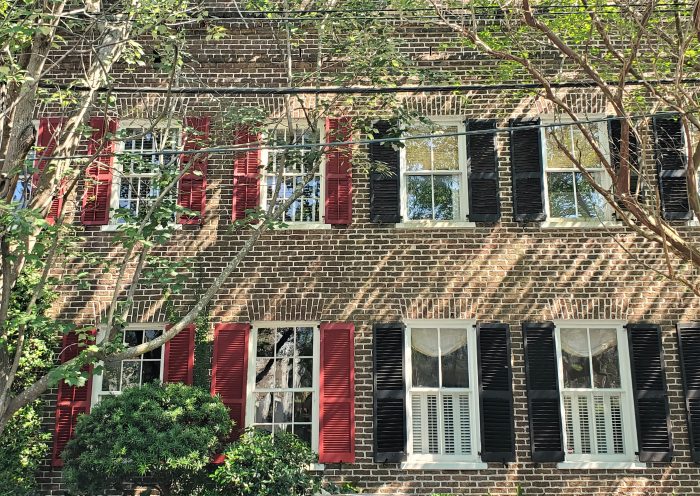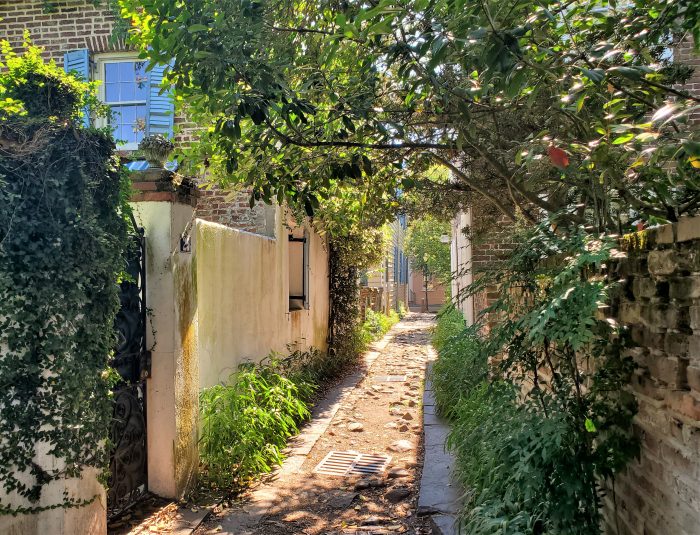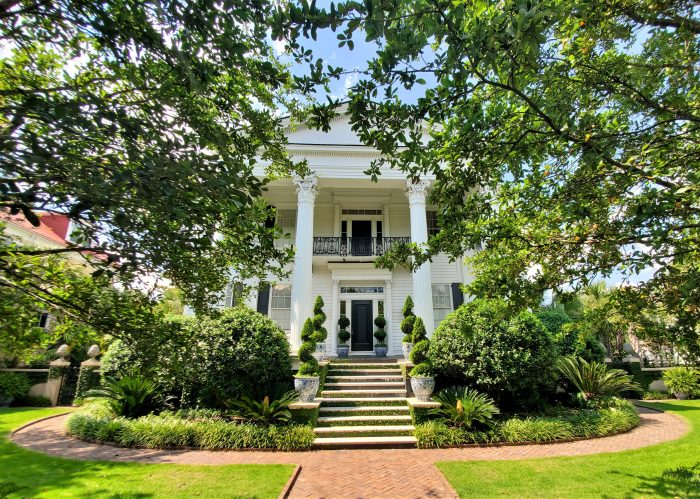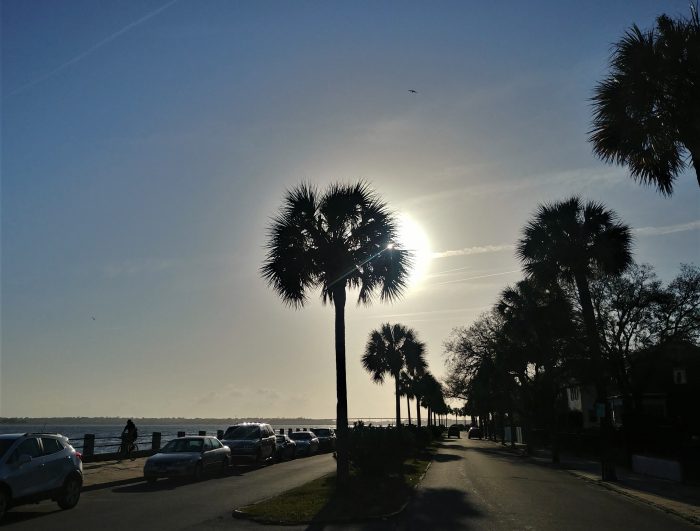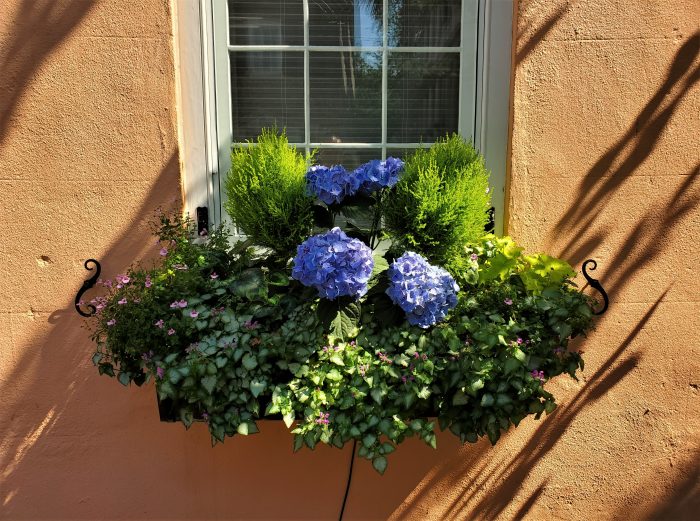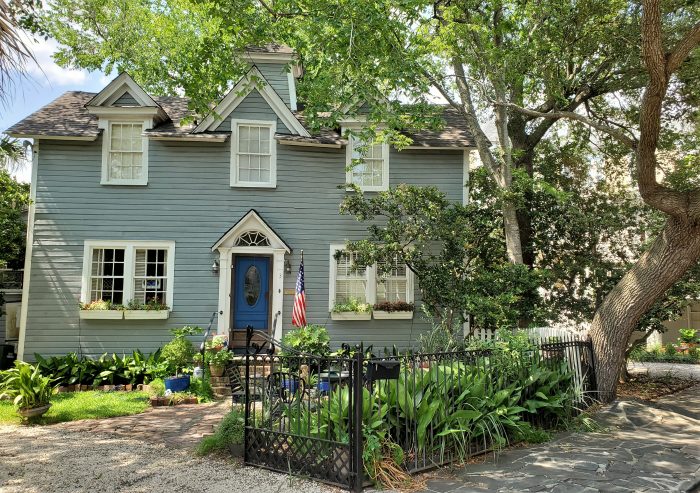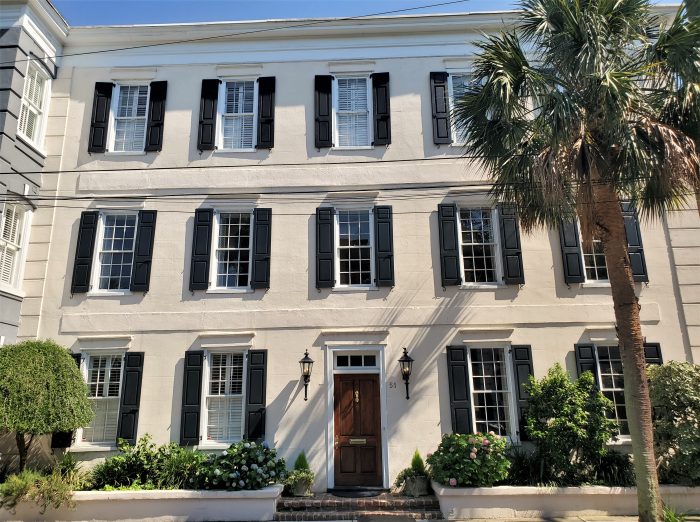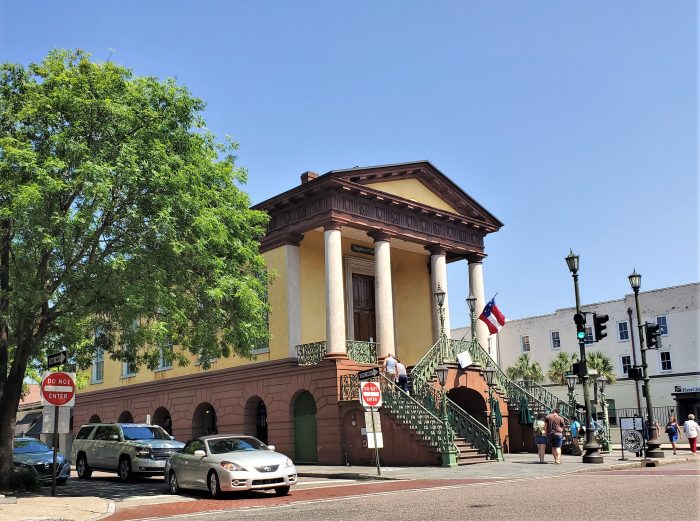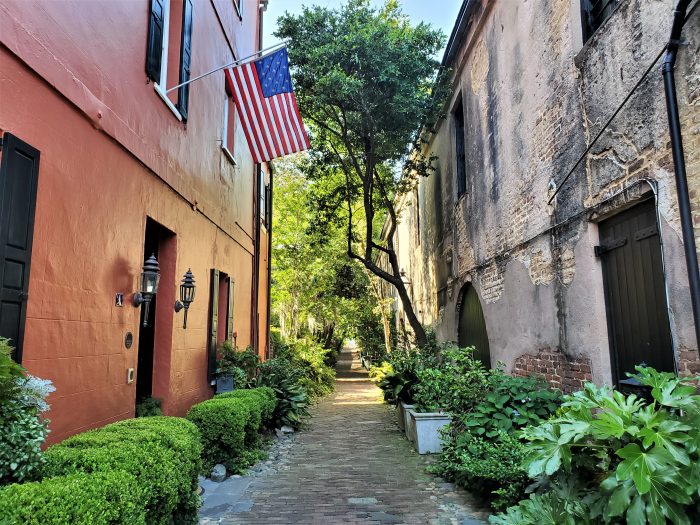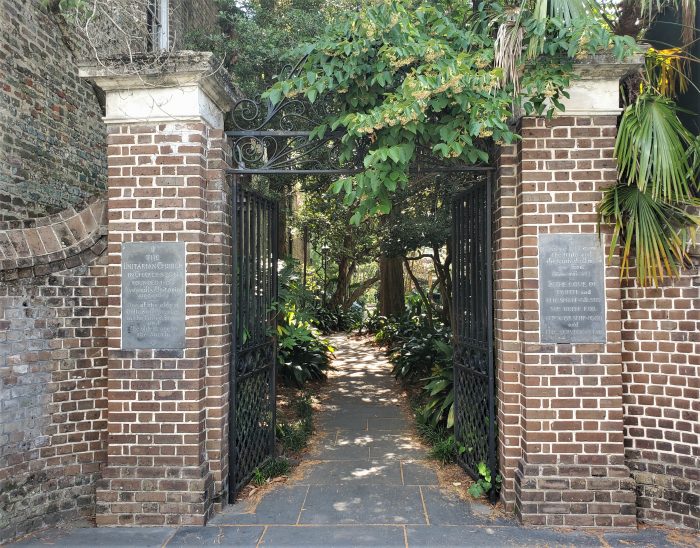This house is actually not schizophrenic, but connected individually owned row tenements. Built in about 1841 on land that was cleared on Wentworth Street after the great fire of 1838, originally there were seven connected buildings — now six remain.
West to East
This beautiful Charleston cut-through is the eastern end (Church Street side) of Longitude Lane.
Obstructed View
This beautiful house on Tradd Street was built between 1834-36. Before the marsh was filled in to extend the Charleston peninsula, this was waterfront property. During the Civil War, a torpedo boat (which looks a lot like a small submarine) became stranded and then abandoned there. It is believed that its remains are still under Tradd Street in front of this house! You can see a photo of it here. So cool.
State Tree
The sabal palmetto tree is the state tree of South Carolina. It was selected as the state tree to celebrate the role it played in the defeat of the British at Fort Moultrie during the lead up to the American Revolution. The fort, which was being bombarded by the British fleet, was constructed of palmetto logs. The tree’s spongy wood actually absorbed the energy of the cannonballs and caused them to just bounce off — allowing the Americans to eventually drive the British ships away and win the inspiring battle.
Happy Hydrangea
This beautiful Charleston window box features a gorgeous hydrangea. One of the cool things about hydrangeas is that they will change color depending on the pH of the soil they are in. You can actually manipulate it to have the plant display different color flowers.
Savage
This little house (about 1000 sq. ft.) was built in 1890. While it looks like it should be out in the country, it is actually in downtown Charleston on Savage Street.
Ansonborough
Built in 1838, this handsome house on Society Street is located in the Ansonborough neighborhood. Ansonborough is the original “borough” of Charleston — which dates back to at least 1726.
City Market — Market Hall
Market Hall is the striking front end of Charleston City Market, and one of the most visited sites in Charleston. In 1788, Charles Cotesworth Pinckney gave the land to the City with the stipulation that the land must forever remain in use as a market.
An Alley By Any Other Name Is Just As Beautiful
Philadelphia Alley, as it is now called, is a wonderful cut-through between Queen and Cumberland Street. It’s had four or five names over the years, including Cow Alley and Duelers Alley. Each would have posed a challenge when walking along its path, but neither cows nor duelers are likely to be found there today.
Gateway Walk
This beautiful entryway on King Street leads to one of the most beautiful walkways in downtown Charleston. It is part of the Gateway Walk — a larger pedestrian path that cuts across a wide section of the historic peninsula. It’s worth finding it and taking a stroll!
- « Previous Page
- 1
- …
- 62
- 63
- 64
- 65
- 66
- …
- 188
- Next Page »
